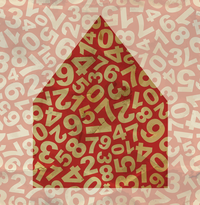House of Numbers
GeoGebra breathes life into dry numbers. With a few clicks, you can discover @#the beauty of polynomials and functions.
|

Lead Image © studiom1, 123RF.com
GeoGebra breathes life into dry numbers. With a few clicks, you can discover @#the beauty of polynomials and functions.
GeoGebra is a fun, open source program for illustrating formulas and is a must for anyone interested in mathematics. One of the great things about GeoGebra is that it allows users to go beyond just geometry.
The project originated in Austria, sponsored by the Ministry of Culture. Currently, 49 developers from all over the world are working on GeoGebra along with the original author and current project leader, Markus Hohenwachter. Additionally, a huge team of translators are localizing the program into other languages.
GeoGebra can be found in most distribution repositories, including Ubuntu, and, therefore, can be installed with a button click; however, the version that comes with Ubuntu is the slightly older, stable version. The latest version is available at the GeoGebra website [1] and can be obtained by clicking the Download button.
You then have the choice between a webstart version for local installation and an applet. In the former case, the software ends up on your computer; in the latter case, it doesn't. The names are bit confusing because it would seem to be the other way around. The applet version presumes that you have a Java plugin, such as Iced Tea, installed. The advantage of the applet is primarily that it provides you the most current version, which at press time is GeoGebra 4.2. GeoGebra is additionally available in the form of archives for installing on Linux, Mac OS X, Windows and OLPC XO.
Since its first version, GeoGebra has implemented a technique known as "dynamic geometry" that lets you explore geometric sets playfully using your mouse. You select icons from the toolbar and move points with your mouse in a coordinates display so that you can draw lines, circles, and polygons. These designs retain their properties even when moving their construction points (Figure 1).
 Figure 1: Moving points A, B, or C retains the basic structure: Perpendicular bisectors of a triangle intersect at the center of the circumference.
Figure 1: Moving points A, B, or C retains the basic structure: Perpendicular bisectors of a triangle intersect at the center of the circumference.
In this way, you easily learn the basic laws of plane geometry along with the vital mathematical concept that the geometrical construct stays the same even when its components are shifted. The idea of universality, of such great importance in mathematics, easily becomes apparent.
The GeoGebra toolbar includes a standard set of 12 groups of tools for working with objects. These include tools for moving, pointing, lines, special lines, polygons, circles and arcs, conic sections, measurement, transformation, and special and action objects. Other general and custom tools are included, along with spreadsheet views and the Computer Algebra System (CAS) – or functions for solving algebraic equations. Every tool group in GeoGebra contains numerous individual tools (Figure 2).
Pages: 5
Scientific documents are where open source tools show their greatest strengths. To save yourself a lot of trouble, however, you need to know how to combine formulas and data into your work. Linux provides the appropriate tools.
Typically, educational software programs cannot accommodate multi-disciplinary learning. However, developers of OpenTeacher are changing the rules with the use of some very interesting concepts.
What shines in the dark is often hidden by clouds. Stellarium provides a clear view of the stars plus a lot of astronomical data.
© 2024 Linux New Media USA, LLC – Legal Notice